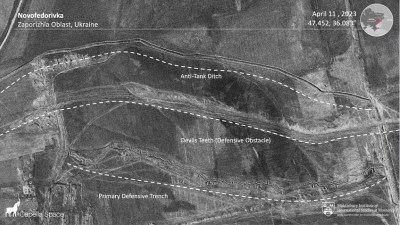Eighty-three years ago to the day (May 10, 1940), 141 German divisions (3.2 million soldiers, 2,245 tanks) initiated “Operation Yellow” against 144 divisions (2.9 million soldiers, 3,383 tanks) fielded by the armed forces of France, Britain (British Expeditionary Forces, or BEF), Belgium, and the Netherlands.
By the evening of May 12, the three tank divisions of General Heinz Guderian reached the river Maas at Sedan, crossed the river on May 13, were reinforced by two additional tank divisions of tank group Kleist … and just kept on going.
In the morning of May 15, 7:30 am, then-French prime minister Paul Reynaud called British leader Winston Churchill and announced: “Nous sommes vaincus, nous avons perdu la bataille.” [We are defeated, we have lost the battle.] Churchill replied: “Surely, it can’t have happened so soon!”
Well, it did. German forces caught the bulk of the French and British armies, which had advanced into Belgium and the Netherlands, in the rear in what Churchill later termed the “sickle cut.” [See map below] In effect, after just five days, the battle for France was over.

It defied conventional military logic and arithmetic. A successful offensive requires a 3:1 force advantage or at least military technology force multipliers. Germany had none of that.
So, can nine or perhaps 12 Ukrainian brigades numbering 45,000-60,000 soldiers defeat well-entrenched Russian forces of at least the same size?
French forces to the south of Luxembourg were massively better protected by the famed Maginot Line of a series of large, tunnel-connected bunkers and larger fortifications. No one, it was thought, could break through. Alas, no one did or even tried. There were a few German feints in that direction in the south and that was it.
To the north of the Line was the vast impenetrable Ardennes Forest. To the north of that, also well entrenched, stood the BEF and the best and strongest of the French army.
The first German special forces attacks came in the north and drew in the BEF and French. Below, through the Ardennes, where they could not go, advanced the German tank forces. The map makes clear the rest.
It’s an interesting fact that Ho Chi Minh studied this French failure and made the most of it at Dien Bien Phu.
Ukraine’s offensive options
The Erich von Manstein “sickle cut” plan succeeded because it surprised a superior defensive force by doing the impossible both in time and space.
But given the geography and deployment of opposing forces in the eastern and south-eastern Ukrainian theater of war, the attacking options are limited and surprise will be hard to achieve.
In fact, the only real surprise option would be a force multiplier technology option: for Ukraine to have acquired heavy long-range artillery and advanced, foreign-operated aircraft.
But let’s start with geography and likely targets.

While there is plenty of muscular Ukrainian talk about taking back Crimea, that’s not going to happen without escalation by both sides to European if not world war levels.
We can’t rule out that Ukraine sees its opportunity precisely in such brinkmanship. Presumably, NATO is not quite ready to buy into that.
Short of that, a push from the Zaporozhe Oblast south in the directions of Melitopol, Berdiansk and Mariupol might well make at least some initial progress if the ground permits rapid off-road tank maneuvers.
Taking and holding territory even short of reaching the Sea of Asov would cut off Russian forces in the occupied Kherson Oblast and may force their evacuation on the model of the evacuation west of the Dnepr River last fall.

What stands in the way of this are layered Russian fortifications south of the Zaporozhe line of control. [See map of 30 kilometers of trenches near Polohy]. There’s no Ardennes-type of gap available. The only thing would be a surprise concentration of forces on what’s in effect a 300-kilometer line of defense.
An alternative or simultaneous option would be a Ukrainian attack east into the Donbas salient toward Luhansk to cut off Russian forces to the north. That would be the “rounding out” of the gains of last September out of Kharkiv.
Can either of these ploys work? They might work well in combination but the principal Ukrainian disadvantage is a lack of airpower. An offensive without at least air parity would be a fool’s errand.
What’s the bottom line?
The coming several weeks will see massive increases in operational intensity characterized by back-and-forth in gains. There will, however, not be a victor. There’s no May 1940 scenario that makes sense short of full-scale NATO intervention.
But Ukrainian President Volodymyr Zelensky has been told he has to try – and he will. Then there will be a point of forces equilibrium and an opportunity for US President Joe Biden to say, ok, let’s sort this out. We’ve shown the Russians they can’t get away with it. Hopefully, they’ve learned the lesson.
Alas, a few hundred thousand died along the way. That’s the price of freedom.
Follow Uwe Parpart on Twitter at @uwe_parpart

